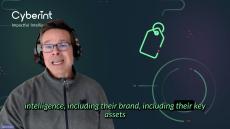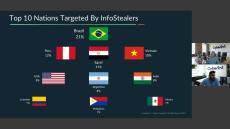Learn more about our Threat Intelligence here: https://cyberint.com/platform/threat-intelligence/
Learn about Cyberint Threat Intelligence Here: https://cyberint.com/platform/threat-intelligence/
- January 2025 (4)
- December 2024 (8)
- November 2024 (6)
- October 2024 (5)
- September 2024 (6)
- August 2024 (6)
- July 2024 (5)
- June 2024 (6)
- May 2024 (10)
- April 2024 (8)
- March 2024 (3)
- February 2024 (9)
- January 2024 (9)
- December 2023 (6)
- November 2023 (10)
- October 2023 (14)
- September 2023 (11)
- August 2023 (9)
- July 2023 (10)
- June 2023 (8)
- May 2023 (7)
- April 2023 (9)
- March 2023 (8)
- February 2023 (5)
- December 2022 (3)
- November 2022 (4)
- October 2022 (5)
- September 2022 (6)
- August 2022 (5)
- July 2022 (4)
- June 2022 (3)
- May 2022 (4)
- April 2022 (4)
- March 2022 (8)
- February 2022 (6)
- January 2022 (2)
- December 2021 (7)
- November 2021 (4)
- October 2021 (2)
- September 2021 (3)
- August 2021 (4)
- July 2021 (7)
- June 2021 (3)
- May 2021 (6)
- April 2021 (5)
- March 2021 (4)
- February 2021 (5)
- January 2021 (12)
- December 2020 (6)
- November 2020 (2)
- October 2020 (4)
- July 2020 (1)
- May 2020 (1)
- April 2020 (2)
- March 2020 (3)
- January 2020 (1)
- December 2019 (2)
- September 2019 (1)
- May 2019 (1)
- March 2019 (1)
- November 2018 (1)
- January 2018 (3)
- May 2014 (2)
Best-in-class managed intelligence suite. We help you identify emerging threats, verify your security posture, and respond effectively to reduce their impact.
CyberInt's Managed Detection and Response services span globally and include some of the top finance, retail and telecommunication organizations. Allowing our customers to combat and respond to advanced cyber threats that would normally go unnoticed by standard security controls, while protecting their brand, digital assets and customers.
Solutions:
- Threat Intelligence: Real-time monitoring of threats in the deep, dark and open web such as phishing and malware campaigns, brute-force and credential stuffing threats, data leakage, including personal identifiable information (PII), and fraudulent activity.
- Digital Risk: Digital footprint discovery and ongoing monitoring of organizations’ cloud and external facing assets. Ensuring visibility into assets with severity-based prioritization of issues to address, highlighting related threats, vulnerabilities, and weaknesses.
- Threat Hunting: Driven by Cyberint proprietary intelligence and custom detections service provides continuous hunt for threats across the IT and infrastructure. Leveraging 3rd party EDR-agnostic technology and SOAR, we deploy proprietary automated playbooks to contain and mitigate threats within minutes.
- Cybersecurity Assessment: Testing applications and infrastructure’s resilience to cyberattacks, to identify weaknesses and loopholes in your security posture.
Intelligence-driven Detection & Response. Leveraging threat intelligence suite, threat hunting and threat mitigation and response services.





















